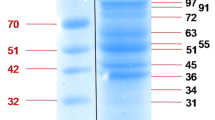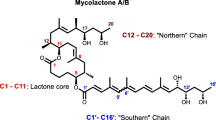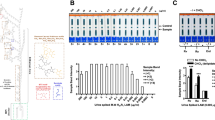Abstract
In Asian countries, there is high occurrence of tuberculosis (TB) among captive wild elephants due to close association with humans and other domestic livestock. The present study envisages on utilization of serological, molecular, and proteomic diagnostic assays for tuberculosis diagnosis. The usage of urine as a biological sample for the identification of biomarkers for tuberculosis forms the prime focus of the study. Seroprevalence of tuberculosis (TB) in elephants in Kerala were found to be 37.2% (n = 86) using Chembio DPP VetTB assay and nine (10.46%) were positive for acid fast bacilli using trunk wash sediment smear. On comparison with DPP VetTB assay, acid fast staining shows low sensitivity of 28.13%, specificity 100%, kappa statistics value of 0.329. The presence of Mycobacterium tuberculosis was confirmed in trunk wash using PCR targeting gene IS6110, at 245 bp amplicon size and 25 seropositive elephants (78.2%) were confirmed positive. Custom sequencing and phylogenetic analysis revealed that the isolate obtained were Mycobacterium tuberculosis. The urine of six TB confirmed elephants and six healthy elephants were selected for proteomic analysis. The protein in urine was precipitated, quantified, and subjected to SDS-PAGE, enzymatic digestion, and HRLCMS analysis. Mass spectrometry data analysis revealed 49 proteins identified in TB-infected group, 68 proteins identified in control group and Galactosylgalactosylxylosylprotein 3-beta-glucuronosyltransferase was the protein exclusively present in TB-infected group. Galactosylgalactosylxylosylprotein 3-beta-glucuronosyltransferase plays a major role in glycosaminoglycan biosynthesis. This is the first report of the presence of galactosylgalactosylxylosylprotein 3-beta-glucuronosyltransferase protein in urine of elephant.
Graphical abstract















Similar content being viewed by others
References
Baskaran N, Varma S, Sar CK, Sukumar R (2011) Current status of Asian elephants in India. Gajah 35:47–54
Bathla S, Rawat P, Baithalu R, Yadav ML, Naru J, Tiwari A, Kumar S, Balhara AK, Singh S, Chaudhary S, Kumar R (2015) Profiling of urinary proteins in Karan Fries cows reveals more than 1550 proteins. J Proteomics 127:193–201
Comes AL, Papiol S, Mueller T, Geyer PE, Mann M, Schulze TG (2018) Proteomics for blood biomarker exploration of severe mental illness: pitfalls of the past and potential for the future. Transl Psychiatry 8:1–15
Cummings MJ, Schluger NW (2018) The diagnosis of pulmonary tuberculosis: established and emerging approaches for clinicians in high-income and low-income settings. Clin Pulm Med 25:170–176
de Almeida BL, Soares AA, Recamonde-Mendoza M, Dall’Agnol A, Camargo JL, Monteiro KM, Silveiro SP (2020) Urinary peptidomics and bioinformatics for the detection of diabetic kidney disease. Sci Rep 10:1–11
Greenwald R, Lyashchenko O, Esfandiari J, Miller M, Mikota S, Olsen JH, Ball R, Dumonceaux G, Schmitt D, Moller T (2009) Highly accurate antibody assays for early and rapid detection of tuberculosis in African and Asian elephants. Clin Vaccine Immunol 16:605–612
Kerr TJ (2019) Seroprevalence of Mycobacterium tuberculosis complex in freeranging African elephants (Loxodonta africana) in Kruger National Park, South Africa
Kulkarni S, Singh P, Memon A, Nataraj G, Kanade S, Kelkar R, Rajan MGR (2012) An in-house multiplex PCR test for the detection of Mycobacterium tuberculosis, its validation & comparison with a single target TB-PCR kit. Indian J Med Res 135:788
Lewerin SS, Olsson SL, Eld K, Roken B, Ghebremichael S (2005) Outbreak of Mycobacterium tuberculosis infection among captive Asian elephants in a Swedish zoo. Vet Rec 156:171–175
Lim MS, Elenitoba-Johnson KS (2004) Proteomics in pathology research laboratory investigation 84:1227–1244
Liotta LA, Ferrari M, Petricoin E (2003) Clinical proteomics: written in blood. Nature 425:905–905
Lyashchenko KP, Greenwald R, Esfandiari J, Mikota S, Miller M, Moller T, Vogelnest L, Gairhe KP, Robbe-Austerman S, Gai J, Waters WR (2012) Field application of serodiagnostics to identify elephants with tuberculosis prior to case confirmation by culture. Clin Vaccine Immunol 19:1269–1275
Michalak K, Austin C, Diesel S, Bacon JM, Zimmerman P, Maslow JN (1998) Mycobacterium tuberculosis infection as a zoonotic disease: transmission between humans and elephants. Emerg Infect Dis 4:283–287
Mikota SK, Maslow JN (2011) Tuberculosis at the human–animal interface: an emerging disease of elephants. Tuberculosis 91:208–211
Mukherjee S, Daifalla N, Zhang Y, Douglass J, Brooks L, Vedvick T, Houghton R, Reed SG, Campos-Neto A (2004) Potential serological use of a recombinant protein that is a replica of a Mycobacterium tuberculosis protein found in the urine of infected mice. Clin Diagn Lab Immunol 11:280–286
O’Garra A, Redford PS, McNab FW, Bloom CI, Wilkinson RJ, Berry MP (2013) The immune response in tuberculosis. Annu Rev Immunol 31(1):475–527
Ong BL, Ngeow YF, Razak MA, Yakubu Y, Zakaria Z, Mutalib AR, Hassan L, Verasahib K (2013) Tuberculosis in captive Asian elephants (Elephas maximus) in Peninsular Malaysia. Epidemiol Infect 141:1481–1487
Qureshi S, Sohaila A, Hannan S, Sheikh MDA, Qamar FN (2019) Comparison of Xpert MTB/RIF with AFB smear and AFB culture in suspected cases of paediatric tuberculosis in a tertiary care hospital, Karachi. J Pak Med Assoc
Sada-Ovalle I, Torre-Bouscoulet L, Valdez-Vazquez R, Martinez-Cairo S, Zenteno E, Lascurain R (2006) Characterization of a cytotoxic CD57+ T cell subset from patients with pulmonary tuberculosis. Clin Immunol 121:314–323
Siebert S, Porter D, Paterson C, Hampson R, Gaya D, Latosinska A, Mischak H, Schanstra J, Mullen W, McInne I (2017) Urinary proteomics can define distinct diagnostic inflammatory arthritis subgroups. Sci Rep 7:1–9
Wang J, Zhu X, Xiong X, Ge P, Liu H, Ren N, Khan FA, Zhou X, Zhang L, Yuan X, Chen X (2018) Identification of potential urine proteins and microRNA biomarkers for the diagnosis of pulmonary tuberculosis patients. Emerg Microbes Infect 7:1–13
Young BL, Mlamla Z, Gqamana PP, Smit S, Roberts T, Peter J, Theron G, Govender U, Dheda K, Blackburn J (2014) The identification of tuberculosis biomarkers in human urine samples. Eur Respir J 43:1719–1729
Acknowledgements
Acknowledgements to Kerala Veterinary and Animal Sciences University for providing all facilities for conducting experiments.
Author information
Authors and Affiliations
Corresponding author
Ethics declarations
Conflict of interest
The authors declare no competing interests.
Additional information
Publisher's Note
Springer Nature remains neutral with regard to jurisdictional claims in published maps and institutional affiliations.
Highlights
• In Kerala, the seroprevalence of tuberculosis in elephants was 37.2%.
Tuberculosis caused by Mycobacterium tuberculosis was confirmed in 78.2% seropositive elephants by PCR.
• Mass spectrometry data analysis revealed that there were 49 proteins identified in TB infected group, 68 proteins identified in control group.
• Galactosylgalactosylxylosylprotein 3-beta-glucuronosyltransferase was the protein exclusively present in TB-infected group. Galactosylgalactosylxylosylprotein 3-beta-glucuronosyltransferase was identified as a potent biomarker for tuberculosis on proteomics analysis.
• This is the first study of urine protein biomarkers associated with TB in elephants.
Rights and permissions
About this article
Cite this article
Manuel, R., Deepa, P.M., Ashok, R.U. et al. Galactosylgalactosylxylosylprotein 3-beta-glucuronosyltransferase—a potent biomarker for the diagnosis of tuberculosis in elephants. Eur J Wildl Res 68, 49 (2022). https://doi.org/10.1007/s10344-022-01598-3
Received:
Revised:
Accepted:
Published:
DOI: https://doi.org/10.1007/s10344-022-01598-3




